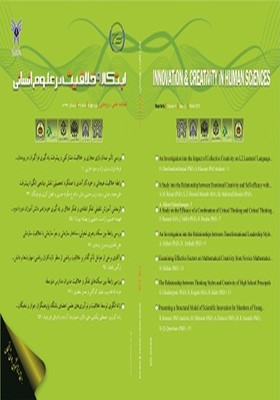-
-
List of Articles
-
Open Access Article
1 - An Investigation into the Impact of Collective Creativity on L2 Learners' Language Learning Ability through the Blended Module
Farhad Ghorbandordinejad Saeed Khazaie -
Open Access Article
2 - A Study into the Relationship between Emotional Creativity and Self-efficacy with Academic Performance: Mediating Role of Achievement Motivation
Ali Mohammad Rezaei Seyedeh Zeynab Hossani Manesh Shahrokh Makvand Hossani Afzal Akbari Balootbangan -
Open Access Article
3 - A Study on the Efficacy of a Combination of Critical Thinking and Critical Thinking on Self-Directed Learning among High-School Students in Qom
Jacethe Salibi Fahimeh Hassani Beheshteh Niusha -
Open Access Article
4 - An Investigation into the Relationships between Transformational Leadership Style, Organizational Structure and Organizational Climate with Employee Creativity Considering the Mediating Role of Creative Self-Efficacy and Intrinsic Motivation
Ali Afshari Nasrin Arshadi -
Open Access Article
5 - Examining Effective Factors on Mathematical Creativity from Novice Mathematics Learners’ Point of View: Mathematical Knowledge and Skills, and Personality Characteristics
Narges Yaftian -
Open Access Article
6 - The Relationship between Thinking Styles and Creativity of High School Principals
Ezatollah Ghadampour Niloofar Kogani Hasan Jafari -
Open Access Article
7 - Presenting a Structural Model of Scientific Innovation for Members of Young Scholars and Elite Club on the Basis of Personal Factors
Reza Kousari Mostafa Niknami Ali Delavar Hamid Reza Arasteh Nader Qoli Qorchian
-
The rights to this website are owned by the Raimag Press Management System.
Copyright © 2021-2025







